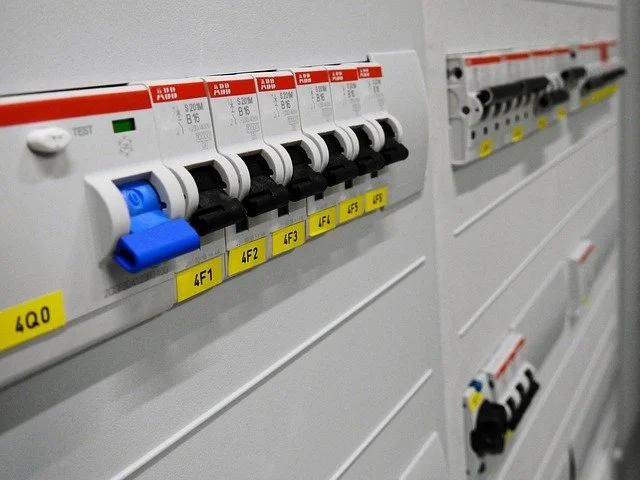Circuit Breakers
A circuit breaker is a device that cuts off power if the current is too high. In the past, home electrical systems used fuses that would blow if there was an overload. Today, a circuit breaker panel consists of multiple breakers, each serving a different circuit. A breaker can be reset rather than replaced when it trips. Without this protection, electrical overloads could short out or melt electrical wiring, devices, and appliances. The consequences range from expensive damage to potentially deadly fires.
Once electricity enters your home from the power distribution grid, it enters a circuit where there’s a hot wire, connected to the outside energy source, and neutral wire that connects to a neutral source. Although electricity is delivered at a consistent voltage, your light bulbs, appliances, and other electrical devices cause resistance. It’s what enables them to work, but appliances are built so that current is kept below dangerous thresholds, although this isn’t always the case
That’s why homes have circuit breakers, which cut off the circuit when current exceeds safe levels.
Repairing a Circuit Breaker
Many customers ask about how to repair a circuit breaker. There’s no clear answer because the only way to deal with a faulty breaker is to replace it. This must be done carefully or else you could be burned, shocked, or electrocuted. The breaker replacing the old one must be the same size and voltage, and the power must be turned off, preferably at the main circuit switch. The power will be off throughout your home while repairs are being made.
To replace a breaker, an electrician will loosen the terminal screw to free the breaker’s wires. Exposed wires can be pulled out from the terminal using a pair of needle-nose pliers with rubber insulated handles. The wires should not touch other wires or breakers. The breaker is removed by pulling up on the side so the clips pop out.
The technician will set the new breaker to the “Off” position before sliding its clips into place. The side with the terminals is pushed in first. Once the clips latch to the metal bar in the panel, the electrician will push on the opposite side to lock the breaker. They tighten the terminal screw next while using needle-nose pliers to hold the wires. Then the new breaker can be turned on.



